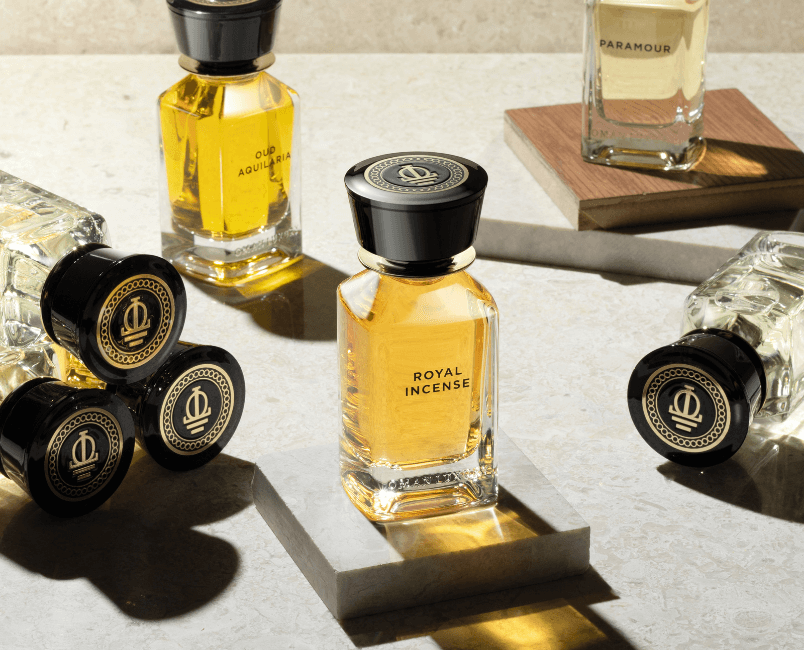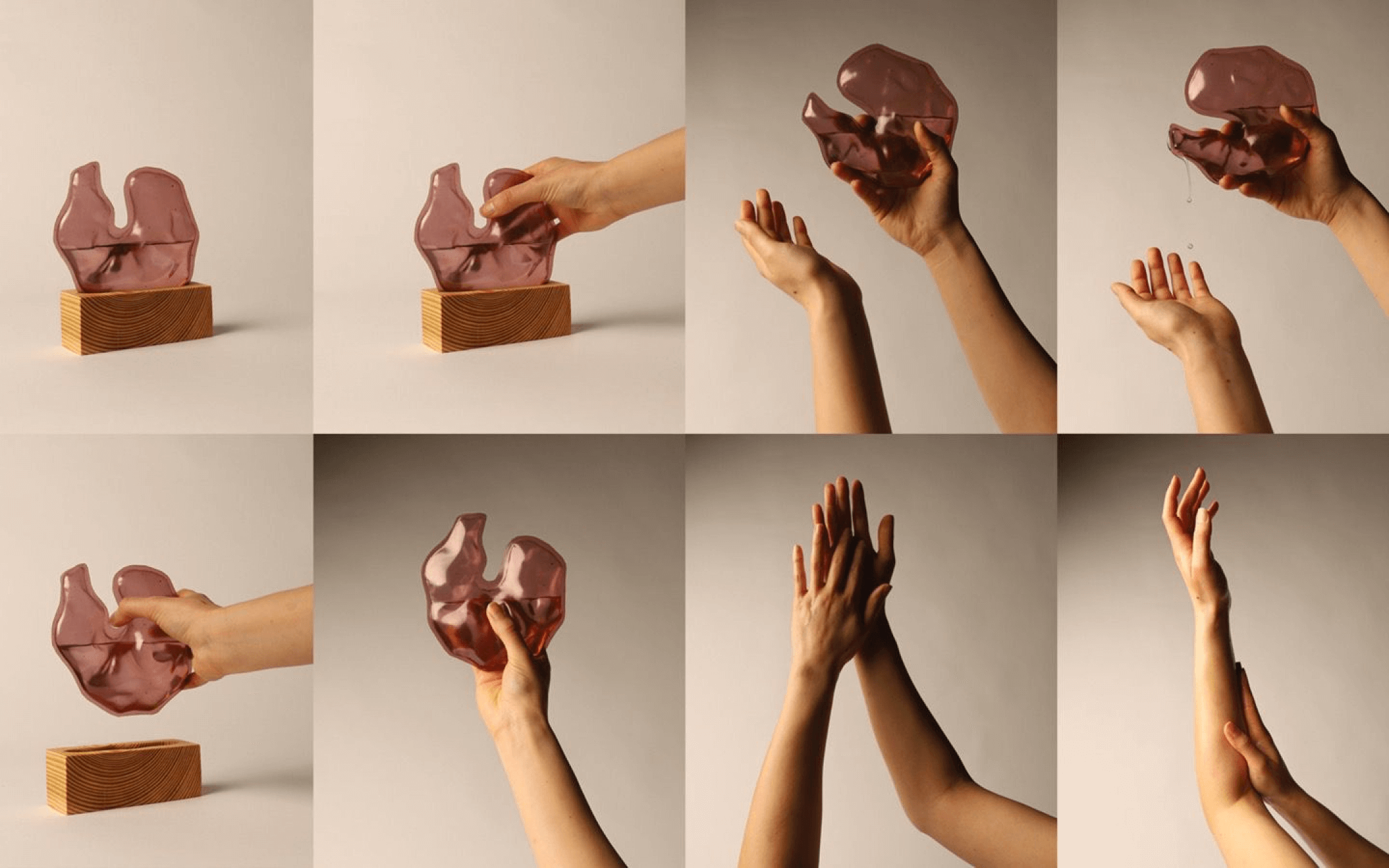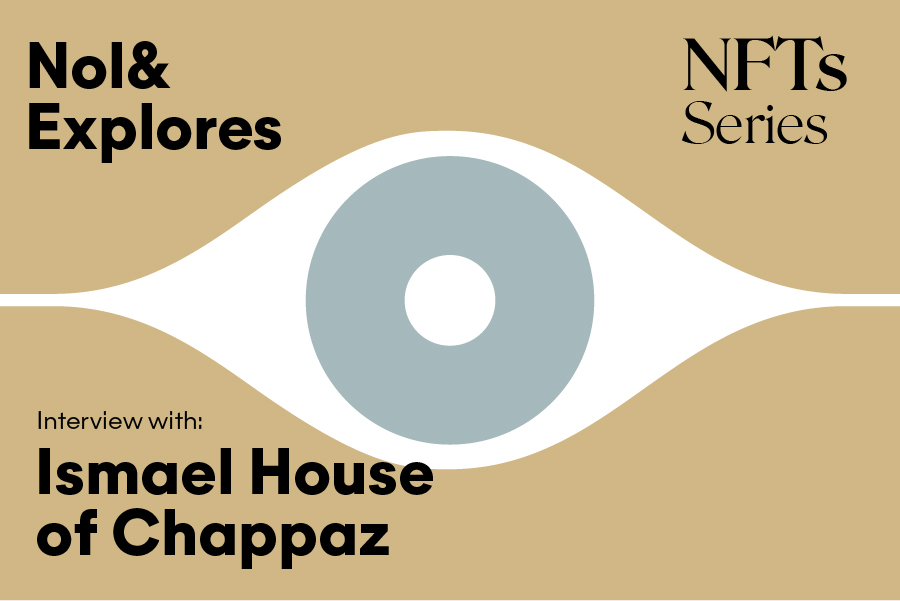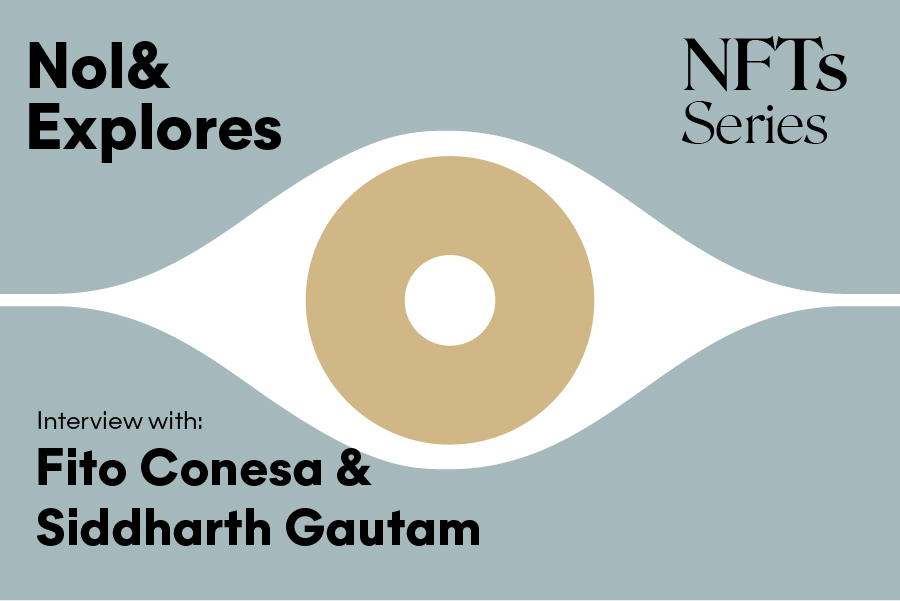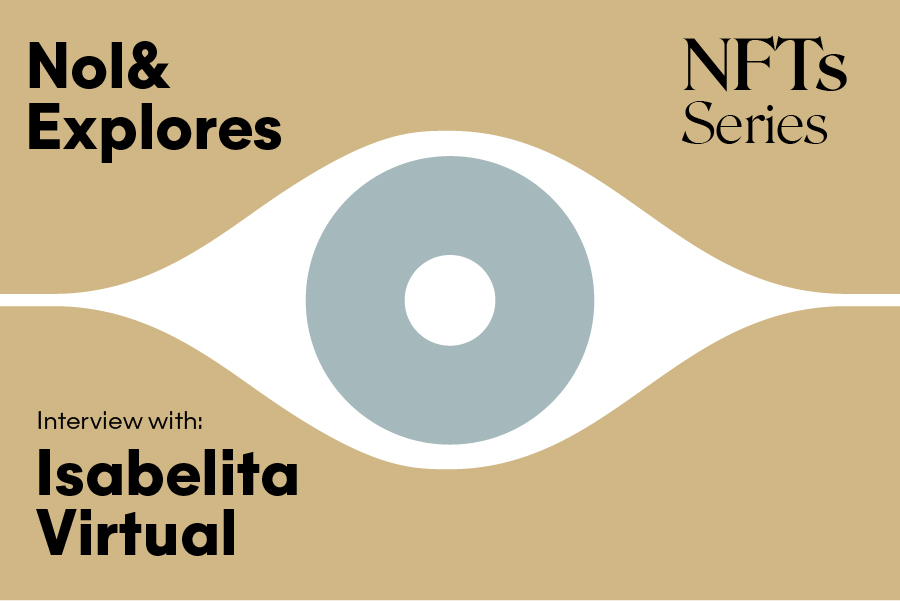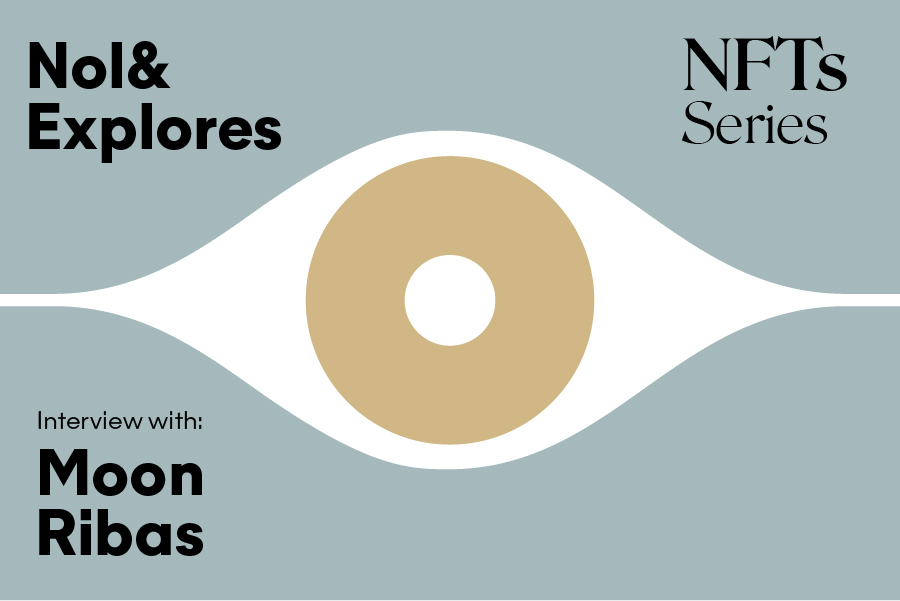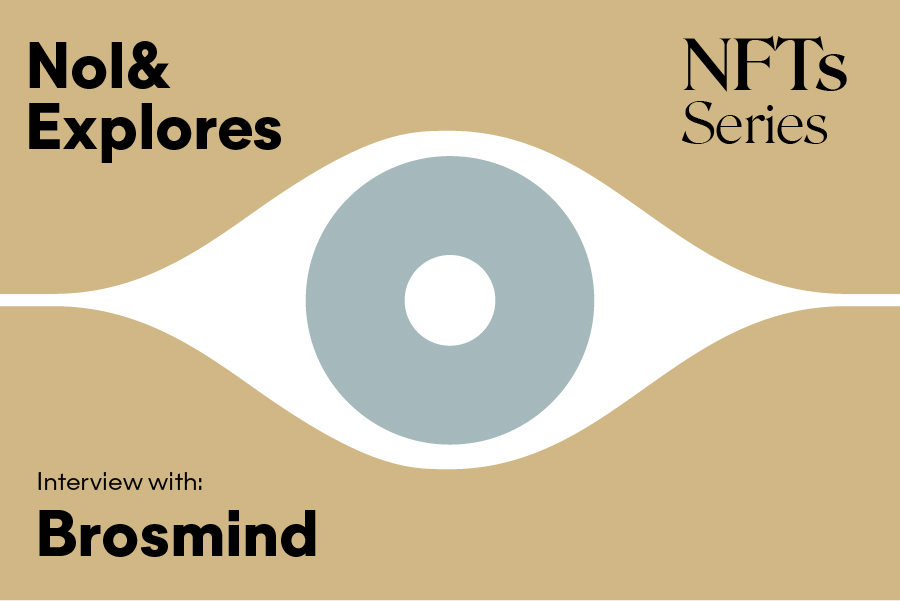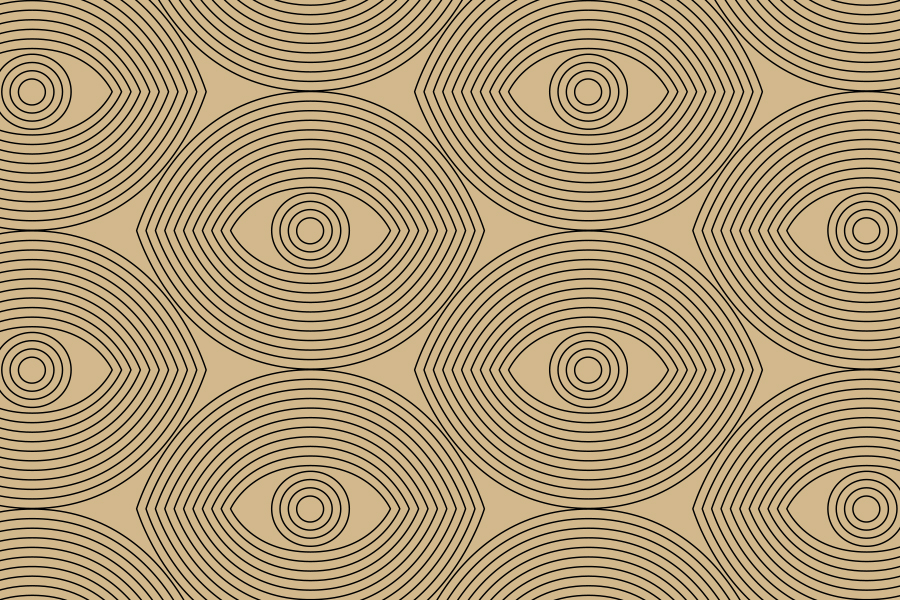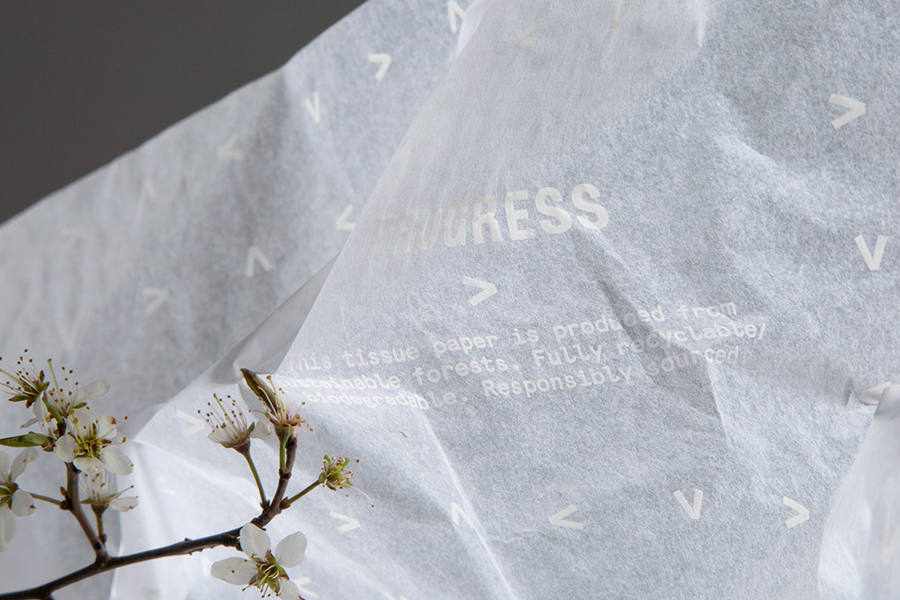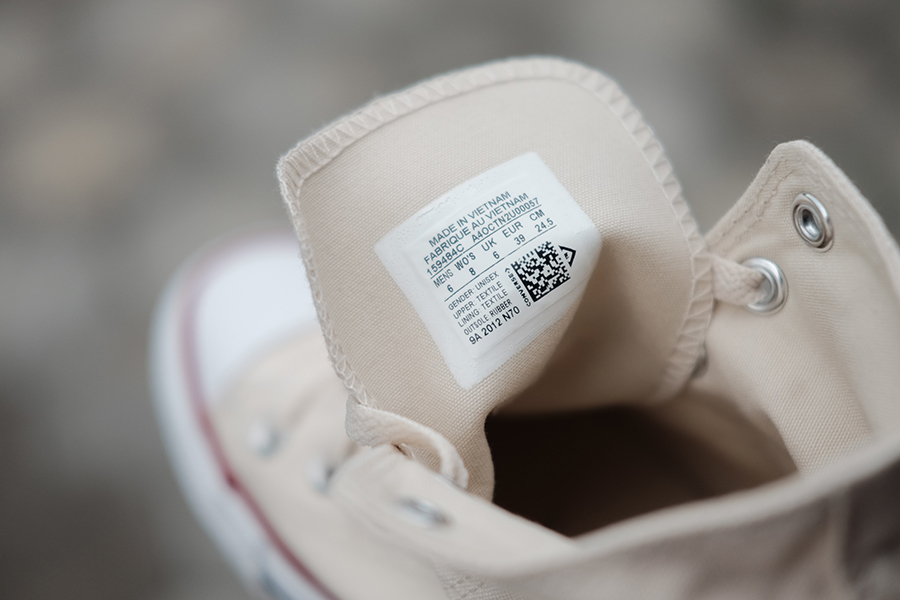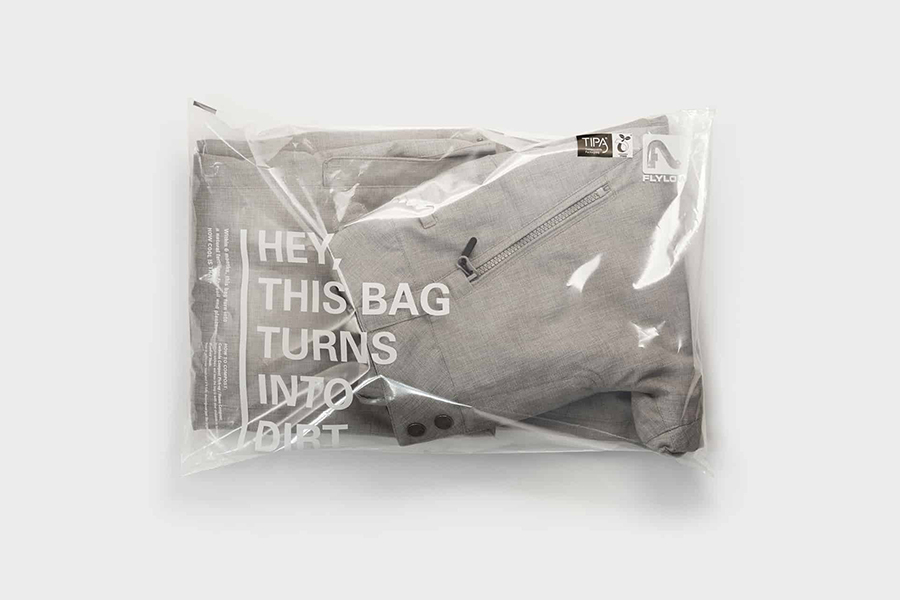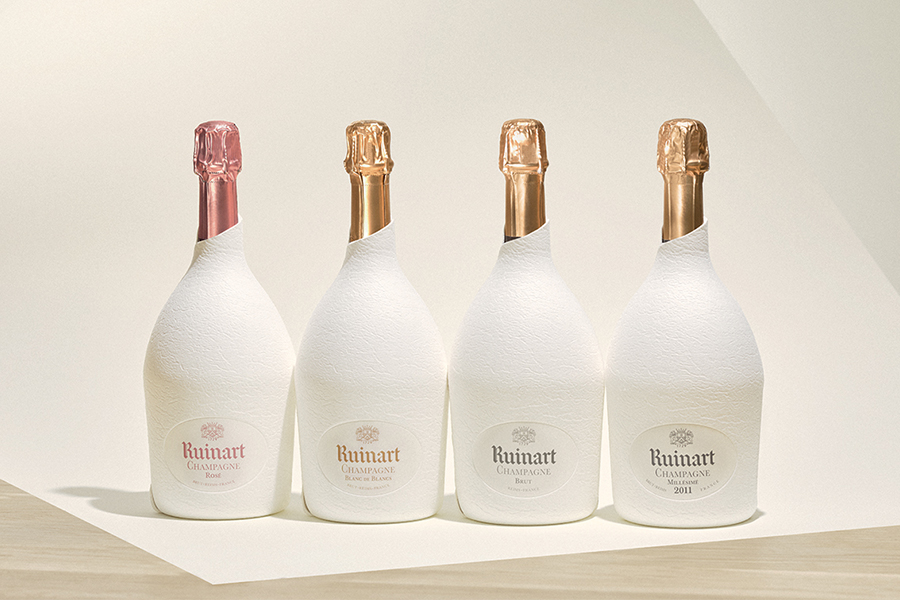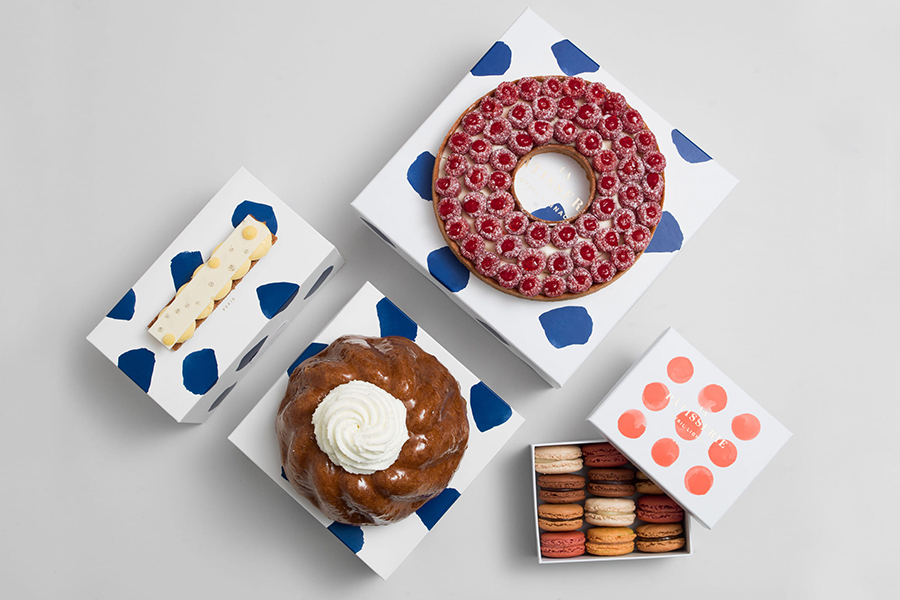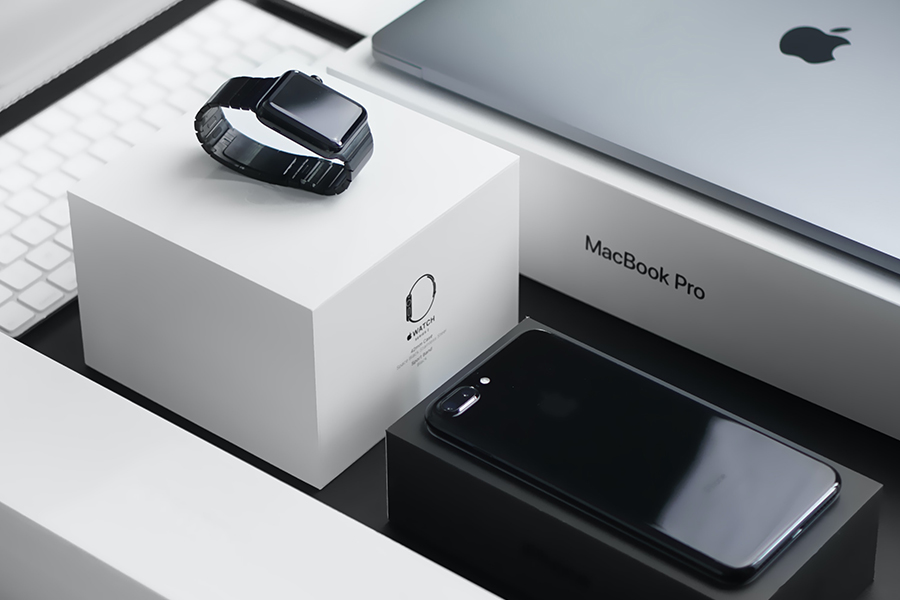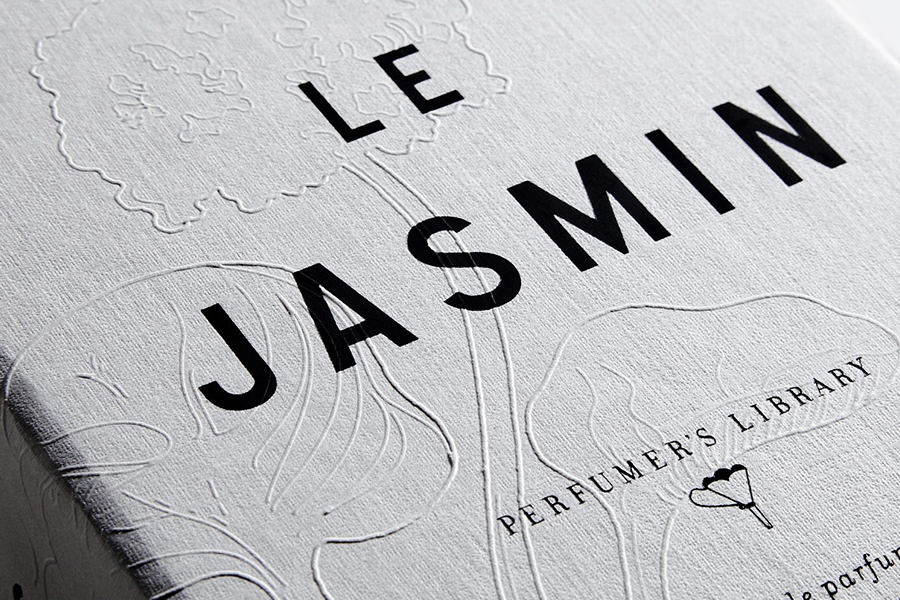Scent is a gateway for travelling to different cultures. Explore with us how packaging design can make us feel a fragrance.
Continue readingBest of Design: Random Coolest Stuff of 2022
Our product packaging roundup for the end of the year, where we go through some of the best products we’ve seen. They’re kinda random. But they’re cool.
Continue readingNoland Explores – NFTs Series x Ismaël Chappaz
Are NFTs a revolution in the digital art world or just another bubble about to burst?
N x NFTS, is a program aimed at those intrigued by digital art, NFTs, and their immense potential.
We interviewed many renowned artists and asked all of them the same question: Are NFTs a revolution in the digital art world or is it just another bubble about to burst?
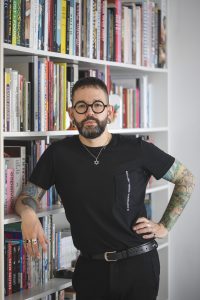
Today’s interview is with Ismaël Chappaz ,Ismaël was the founder and co-owner of the design studio Tactelgraphics from 2005 to 2020.
He is currently the director of the contemporary art gallery House of Chappaz (Flat) in Valencia and the co-director of House of Chappaz (Basement) in Barcelona with Toormix Studio. He also acts as an independent curator.
What brought you into this digital art world and what is it that you find attractive and interesting about NFTs?
I’ve had a Contemporary Art gallery since 2011 in València (House of Chappaz Flat) and I opened a second venue in Barcelona in 2018 (House of Chappaz Basement).
I co-direct this last one together with Oriol Armengou and Ferran Mitjans from Toormix studio. When NFTs appeared I didn’t find anything new or interesting, they were simply a new kind of format, not much more.
We have always had video artists/digital artists in the galleries who have obviously used the digital image as a medium. Several of our artists started doing NFTs. One thing led to another, and we ended up hosting the first NFT exhibition in a proper contemporary art gallery.
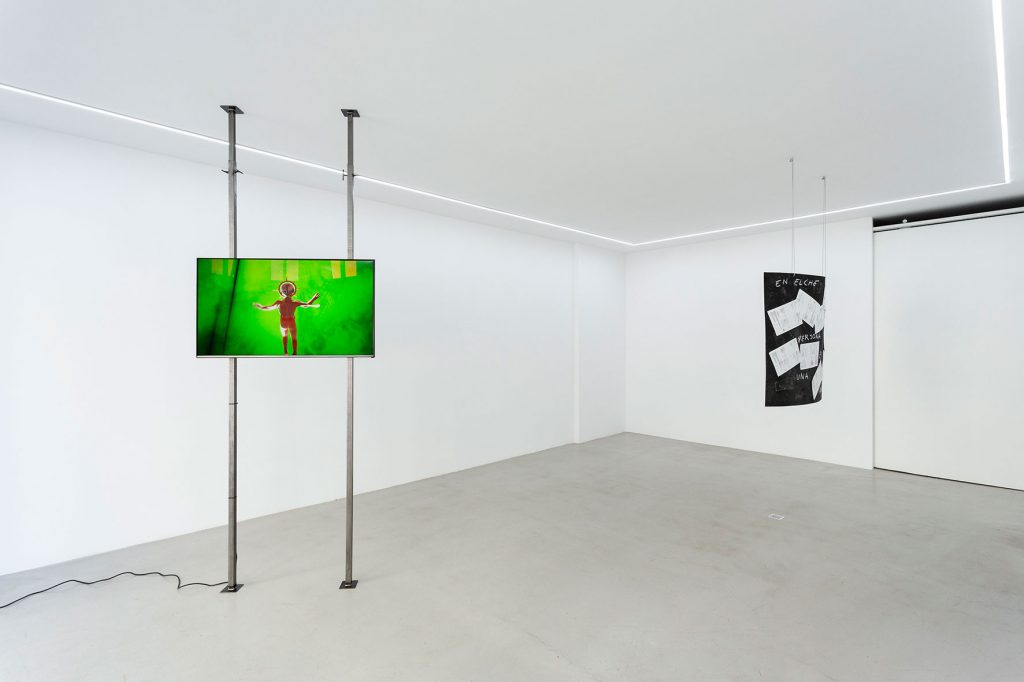
Many artists are concerned about the climate impact of art sales that rely on blockchain technology and there is a lot of discussion about the massive use of electricity and the environmental impact this brings. What is your opinion on this?
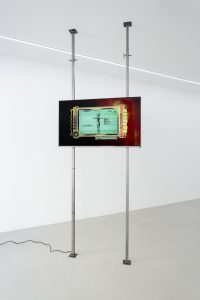
If we get into that mood then let’s stop everything and dedicate ourselves to planting potatoes. It seems to me there are more polluting things than an NFT.
Nowadays nothing is sustainable, just look at what is really being fulfilled from the 2030 Agenda. Practically nothing.
This is not to say that we should continue destroying everything, but perhaps what we should do is be more socially aware before considering whether the electricity needed to operate an NFT is polluting.
What real possibilities of expression and experimentation do you think your art offers in the NFT world beyond monetization?
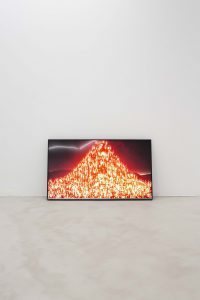
I don’t know, I’ve always been quite “enfant terrible”. I have a way of doing that is a bit different from the so-called conventional gallery. I’ve done things that didn’t fall into the norm. I didn’t set up a gallery for status or to become a millionaire. Any kind of speculation disgusts me if that’s what you mean by “beyond monetization”.
I have integrity and transparency; I have nothing to hide.
How do you see the future of NFTs in the short and long term?
As I said before, for me NFTs are nothing more than a new format for presenting work. I guess they are here to stay in the contemporary art world. Time will tell but for the time being, I don’t have a crystal ball to predict anything.
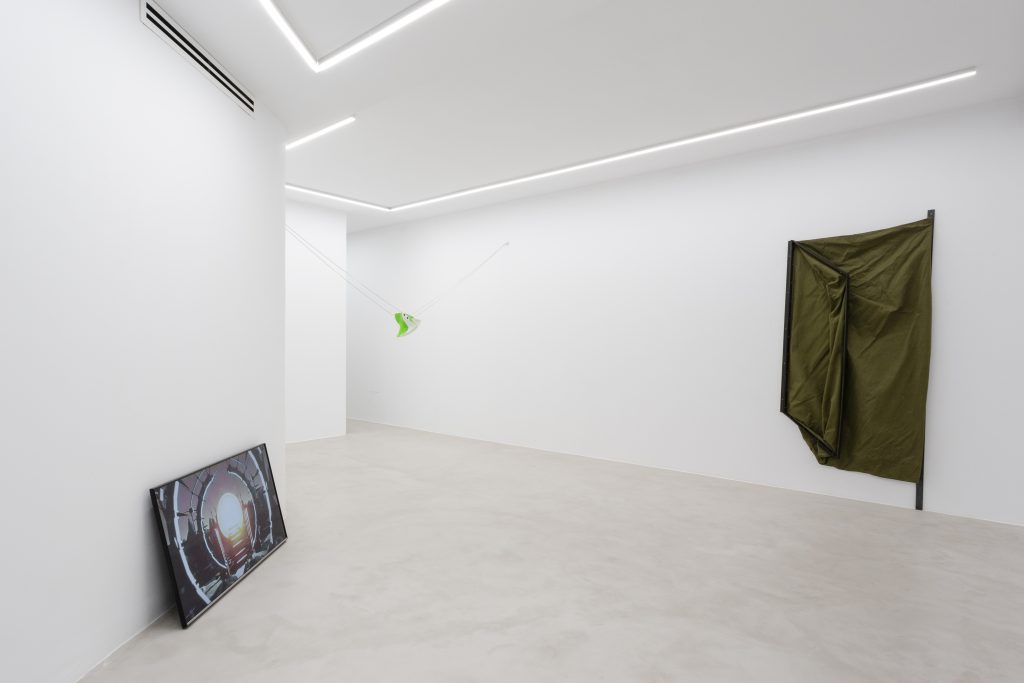
Noland Explores – NFTs Series x Fito Conesa & Siddharth Gautam
Are NFTs a revolution in the digital art world or just another bubble about to burst?
N x NFTS, is a program aimed at those intrigued by digital art, NFTs, and their immense potential.
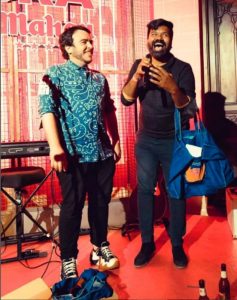
We interviewed many renowned artists and asked all of them the same question: Are NFTs a revolution in the digital art world or is it just another bubble about to burst?
Today’s interview is with Fito Conesa & Siddharth Gautam, they are artists and producers and their work has been shown at various art fairs, art centers, and galleries such as ARCO Madrid, Loop Barcelona, Matadero, CCCB, and the Cartier Foundation.
They are the creators of the first Digital Ninot Indultat turned into an NFT, and since 2019, along with filmmaker Aimée Duchamp, they form La Rabiosa Productora, producing film and video content.
What brought you into this digital art world and what is it that you find attractive and interesting about NFTs?
Well, it was a bit of a coincidence. While we were still studying how the sector was evolving and beginning to understand it better, we received an invitation to participate in a contest in Valencia; a bid to create a digital ‘ninot’ (which is usually a giant paper maché sculpture that is burned) for the occasion of fallas (the local festivities).

The winning entry would become the first digital ninot pardoned as an NFT. We were the winners, by the way, and this was our entry into the world of NFTs.
At the same time, we were also participating as artists in the TFN exhibition at the House of Chapazz Basement gallery in Barcelona; an exhibition of NFTs created by the artists of the gallery, and that was another occasion where we exhibited another NFT piece.
What we see interesting about NFTs – especially for digital artists – is the smart contract that ensures that creators maintain their intellectual and economic rights beyond the first sale. This can secure the author’s rights, avoid plagiarism, and push creation.
What possibilities for artistic expression does the world of NFTs offer?
From Cryptokitties, to Winkelmann’s 5000 day, to Bored Apes, and VeeFriends, there are many ways in which creators are using Ethereum’s core technology to create and sell art, entertainment, and experiences.
The decentralized technology, the number of selling platforms, and the high interest of the industry can provide a lot of freedom for artistic expression. It’s such a pleasure to see so many artists creating pieces and making money from this – free from traditional ways of working.
But on the other hand, the high speculation, volatility, and competition can cause many artists to tire and fall by the wayside of this boom. The industry is still evolving, and we have to watch how it develops.
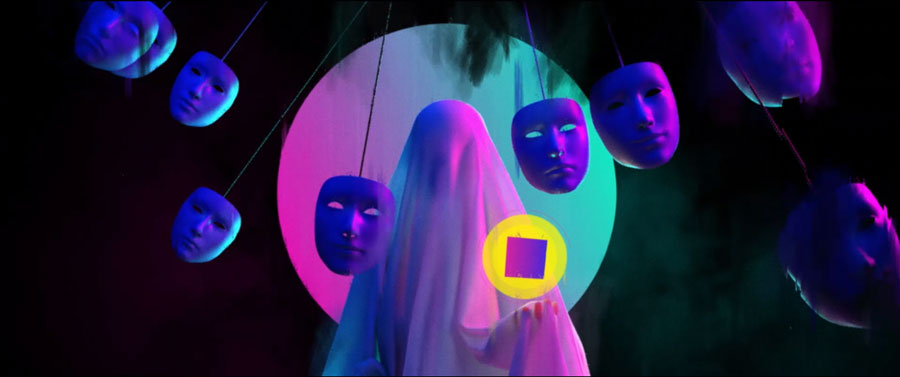
Do you think NFTs have been a revolution in the digital art world or are they just a speculative bubble?
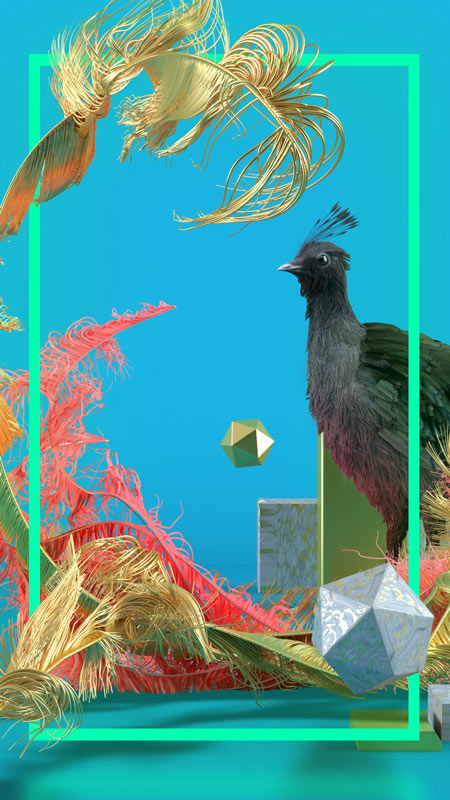
In many ways yes, for digital artists, having their rights secured on the blockchain and having an open marketplace where you can sell your creations is a freedom that wasn’t there before.
But still, how everything is linked with the high speculation of cryptocurrencies, it isn’t a utopia.There are cases of plagiarism, theft, gas fees, complications of converting cryptocurrencies into fiat currency, and the cost to the environment of maintaining decentralized networks. This could prevent the egalitarian artistic paradise that this technology aims to become.
How do you see the future of NFTs in the short and long term?
The technology is promising, but there are many things that need to be improved. At the moment there is a lot of noise and a lot of speculation – the promise of getting rich quickly – tilts the balance in favour of investors and not creators. It must be recognized that the old forms/structures of the market have to evolve, and this technology can be an option.

Noland Explores – NFTs Series x Isabelita Virtual
Are NFTs a revolution in the digital art world or just another bubble about to burst?
N x NFTS, is a program aimed at those intrigued by digital art, NFTs, and their immense potential.
We interviewed many renowned artists and asked all of them the same question: Are NFTs a revolution in the digital art world or is it just another bubble about to burst?

Today’s interview is with Isabelita Virtual, a multi-awarded Creative Director and photographer.
She has been awarded by Cannes Lions, Clio Awards and the D&AD Festival. The first Spanish woman featured in Times Square (NYC) with Midnight Moment.
Isabelita launched a luxury outerwear brand via NFT with Cape di Cour, which will be explained in today’s interview.
What brought you into this digital art world and what is it that you find attractive and interesting about NFTs?
One year ago or so, Alejandro Mingarro from Brosmind mentioned NFTs to me and said it would be an interesting opportunity. I began to understand all the possibilities that the technology could offer me.
All my work is digital for several reasons. My first photos from 10 years ago were taken with very little resolution for large format printing as I took them with my phone. During these years I have had a lot of problems transforming the digital work into physical work and sometimes it seemed that if there was no physical work there was nothing… Before I got involved with NFTs, I found other ways to exhibit my work and give it value like virtual reality.
I participated in the Uncontaminated Oslo festival and I was able to exhibit in virtual reality. For me, it was an outlet for that digital work that I could not print in large format.
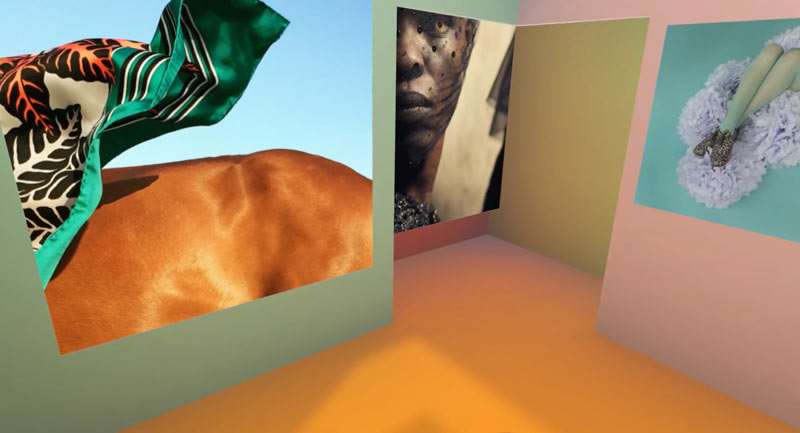
In what ways do you see NFTs complementing the art world? Which benefits besides financial do you see in NFTs compared to more classical ways of creating and trading art pieces?
I believe there are three important benefits that NFTs offer:
- Changing the status quo. I think we have to try to find other ways of doing things in a way that has not been done till now. For me, the most important thing is not the speculation or the future itself, the most important thing is to change the status quo and the idea that art is only for a few and is something elitist. Now, I think that many people have started to buy art and become collectors. There is a speculative part but there is also a part of supporting artists and demystifying the figure of the collector.
- Transparency. Knowing who has bought that work, where it is, and its evolution afterwards seems to be something incredible and necessary.
- The creation of communities, where the community makes sense again and ceases to be an element of accumulating followers or likes. Your power is not a like on instagram. You have real power to do things with others.
What do you think about collectives like Worldofwomen? Do you consider it necessary for these platforms to exist? and is there also female discrimination in the digital art world?
I believe that the main motivation is not so much to support women in the arts but to educate within the world of economics, which has always been more linked to men.
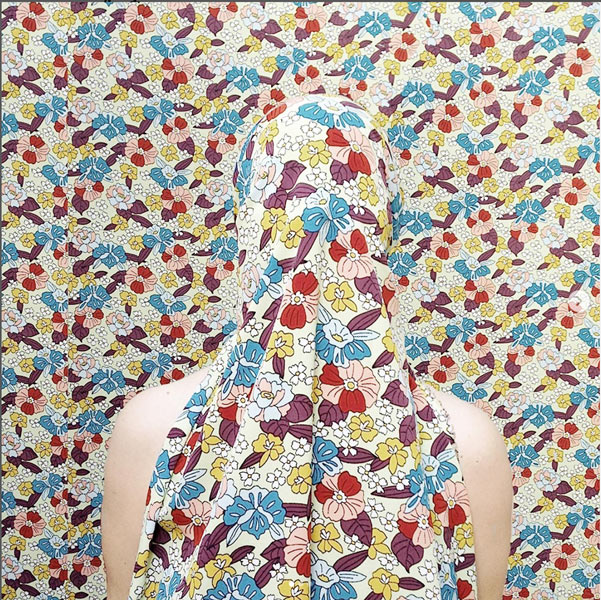
Collectives like World of Women, what they achieve beyond giving support, which is also important, is to educate and break the stereotype that everything related to the economy and technology are male areas and that women only do art.
It is very difficult for you to understand the NFT world if you do not know what a Digital Wallet is, or if you do not know what Ethereum is. For this reason, these collectives are important.
It is also important when it comes to backing up with NFT fraud or scams, isn’t it?
Yes, I know very few people who haven’t been caught in some scam, because the risk in the NFT world is “earning by doing”. That is to say, you have to invest money, and when putting money in a hostile environment you have to be very careful and cautious.
Do you think the NFTs have been a revolution in the digital art world or are they just a speculative bubble?

I find it hard to think that it will become a speculative bubble with so many technology companies and banks shifting to crypto. Everything is going very fast but I think that now the speculative rush is falling and people are trying to buy with more criteria.
For me, I only buy art that somehow either speaks to me or connects with me, or someone does something that hasn’t been done before.
The luxury industry, sports clubs, the music industry, the artistic ecosystem, etc… all have joined the NFT movement. Do you think the NFT world is focused on a more exclusive market?
Mainstream platforms that reach millions of people like Twitter, Tiktok and Instagram have started to democratize it. The easier the access gets, the larger the market will be, where all kinds of contracts and all kinds of prices and sectors will prevail. If you are going to buy something that is worth 50€ it is very accessible to people, the markets will diversify and everyone will access these digital assets like we access them now. It’s normal that luxury brands have taken advantage of this movement because money breeds money.
But in the end, the more people buy – even if the price is low – the more money everyone earns. So it’s in everyone’s interest that technology is accessible at more affordable prices.

How was the experience of working with Cape de Cour and what could you express with NFTs that could not have been expressed in any other way?
It was a campaign launch. Cape de Cour is a luxury waterproof jacket brand where the material of each garment is a technological material patented by them. It made sense for a brand that was already working in the world of technology to communicate to its audience in another way.
We did the collaboration with a digital artist named Tony Murray, and he created the avatars and the space where this story takes place: It was two guardians standing by Heaven’s gates who controlled the weather and the rain.
The big difference in making this piece, which could be a communication piece, is that for the first time, a brand offered the piece itself to a client, that is, whoever bought the cape kept the piece. It was a way of talking differently, of explaining that when you buy the cape you are also buying the brand values, the vision, the technology. They made an unlimited edition of capes and the first 3 people who bought it got the content. It is a gift but at the same time, it can also be an investment for the same customer because, 10 years from now, having a Cape de Cour NFT could be much more valuable.
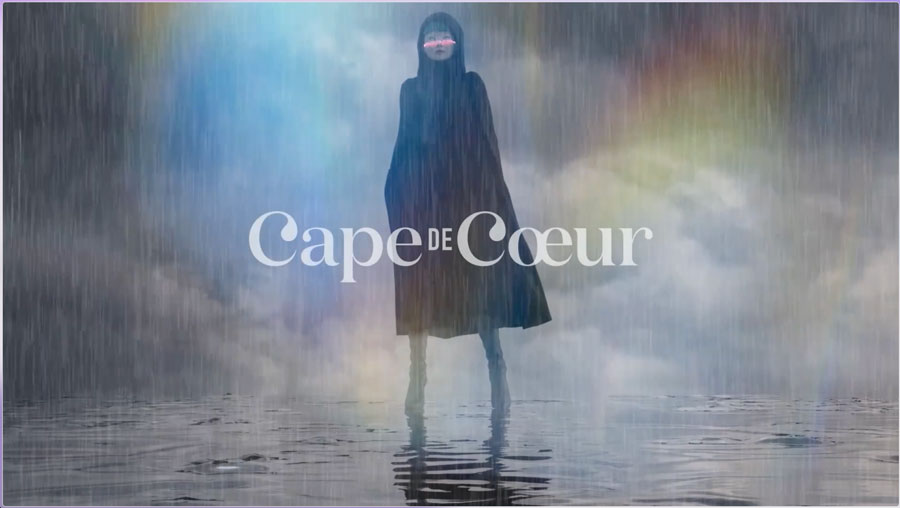
‘Leofy.io’, a startup from Barcelona, will launch in April as the first platform in the world where you can buy NFTs with a credit card. What do you think about democratizing NFTs?
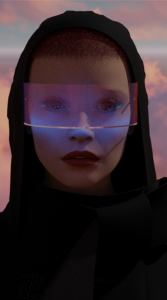
There are already some ways to buy NFTs with Apple Pay or a credit card.
I think what will make sense of all this is that, by democratizing it, it’s not going to be so important to understand the technology or how to gain access to the product being offered, but to understand the culture that is changing.
It will be much easier to gain access now, although I don’t know if in turn, when something is democratized so much it loses a little bit of its magic. This is part of the game right now, to think that not everybody knows it, to discover new things, a whole underworld to be discovered.
It will also help to avoid scams, which I think is the most dangerous and less beautiful part of these channels that are so difficult to manage.
How do you see the future of NFTs in the short and long term?
At the moment I want to see it with optimism. For example, 10 years ago Instagram appeared and made a change. As technology got associated with photography, communities made Instagram or social media, in general, bring some excitement to the communication landscape. Now, just by forcing us to think differently, NFTs have already been a breakthrough.
I believe they’re here to stay, and I hope it is just the beginning of a different system from what we are used to. I hope we don’t repeat the same mistakes and apply the same system deficiencies to this new technology. That’s all. It would be great if there were mechanisms in place to enforce a better way of doing things.
Noland Explores – NFTs Series x Moon Ribas
Are NFTs a revolution in the digital art world or just another bubble about to burst?
N x NFTS, is a program aimed at those intrigued by digital art, NFTs, and their immense potential.
We interviewed many renowned artists and asked all of them the same question: Are NFTs a revolution in the digital art world or is it just another bubble about to burst?
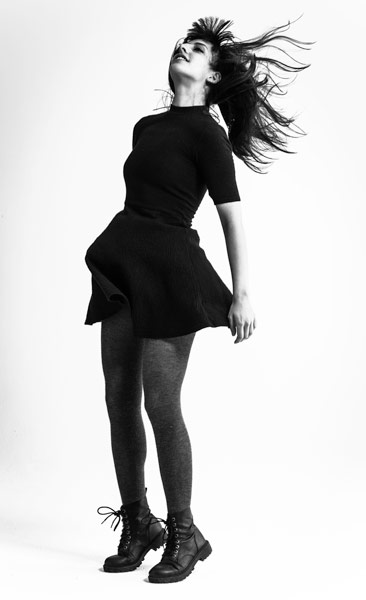
Today’s interview is with Moon Ribas, a Catalan cyborg artist best known for developing an online seismic sensor that allows her to feel earthquakes through vibrations.
In order to share her experience, she then translates her seismic sense on stage. Ribas transposes the earthquakes into either sound, in her piece Seismic Percussion; or dance, in Waiting For Earthquakes. In these performances the Earth is the composer and the choreographer; and Ribas, the interpreter. Ribas’ seismic sense also allows her to feel moonquakes, the seismic activity on the Moon. Ribas believes that by extending our senses to perceive outside the planet, we can all become senstronauts. Adding this new sense allows her to be physically on Earth while perceiving the Moon, so in a way, she is on Earth and space at the same time.
Since 2007 Moon has been experimenting with the union between technology and her body to explore the boundaries of perception and to experience movement in a deeper way. Some of her previous research includes transdental communication, 360º perception and the Speedborg. In 2010 she co-founded the Cyborg Foundation, an international organisation that aims to help people become cyborgs, defend cyborg rights and promote cyborg art. Ribas also co-founded the Transpecies Society in 2017, an association that gives voice to non-human identities, defends the freedom of self-design and offers the creation of new senses and new organs in community.
We’re sharing her experience with technology and her perspective on digital art and NFTs.
Within the Cyborg movement, have you considered creating any project related to NFTs?
We have talked about it and imagined many things but we have not yet taken the risk, it is still a new world for me and I try to understand it every day. At first, it was hard for me to understand it. In my opinion, art is something more tangible than ephemeral, however with the world of NFTs it seems that everything is infinite; that art will prevail forever, and I find that fascinating, but at the same time it creates uncertainties.
If I had to generate an NFT I would start from the basis of creating something that is related to nature like I have done previously with my work.
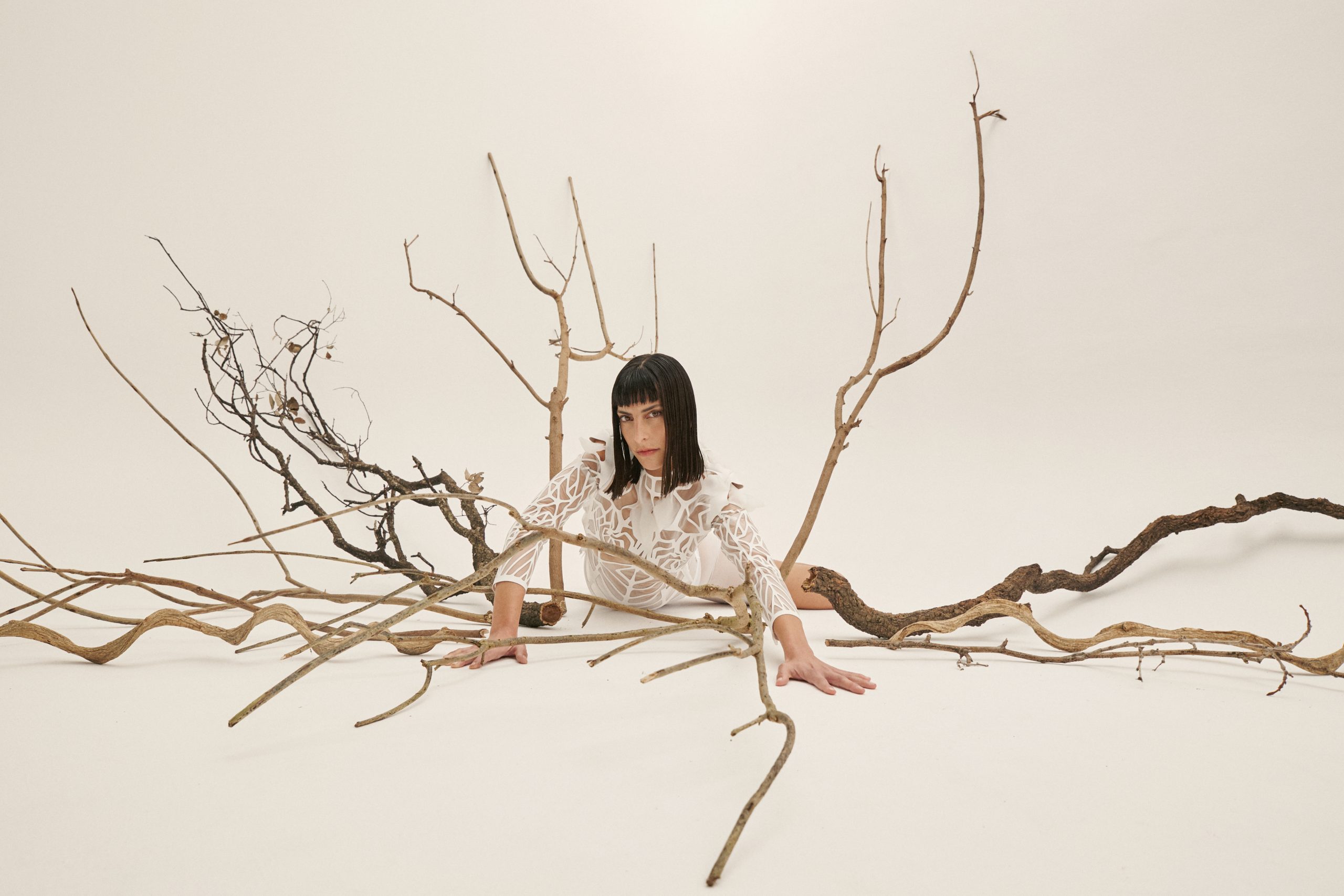
Case in point, Fenomen is a work in conjunction with Quim Girón in which we explore the uncontrollable force of nature through ice. The stage becomes a freezer and blocks of ice start to appear. In the end, the water floods the stage and wets us, highlighting its ephemeral nature. However the NFTs it is different, it is a perpetual form of art. In my case, I would do something that has to do with the ocean because I have always been very connected to the ocean since I was a child.
To be able to show that message of exploring how nature works, to see natural phenomena from another point of view and also to realize that, in a way, each one of us is a small phenomenon surrounded by other species. We are not alone. Nature is infinite.
In what ways do you see NFTs complementing the art world? Which benefits besides financial do you see in NFTs compared to more classical ways of creating and trading art pieces?
I’ve never really been too familiar with technology. Since I was a child I’ve had little connection with it. I had a cell phone at a very late age and I’ve always been curious about merging technology with art. In my case, I am a choreographer and I was looking for a way to unite the language of dance with what happens on earth.
In this case, for more than seven years, I wore implants in my feet that allowed me to detect the movement of the earth’s crust in real-time and feel in my body any earthquake that occurred under the face of the earth. I was very afraid to take them off, much more than I was when I put them on because in the end, these technological devices were just another part of my being. And when I took them off I was still feeling the vibrations.
I think that in the case of NFTs it can also be complemented in a similar way to art, as it opens up a world of infinite possibilities. The important thing is everyone’s right to not feel violated. We have a lot of work ahead of us and a lot to learn.
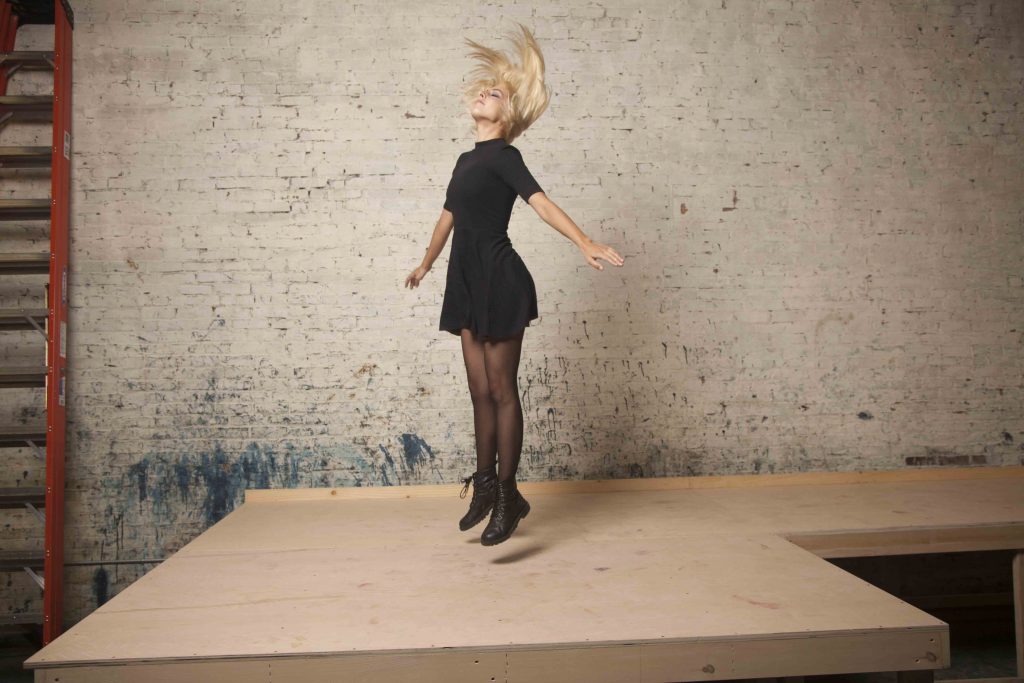
Do you think NFTs have been a revolution in the digital art world or are they just a speculative bubble?
I don’t want to sound pessimistic but I think it could be a speculative bubble that could burst at any moment. But that explosion doesn’t have to be bad, in the end, every big change brings something good, and we learn with time. I don’t understand too much about it, and I can’t give a very detailed view. As with cryptocurrency, it is changing all the time. I think the world of NFTs is something similar.
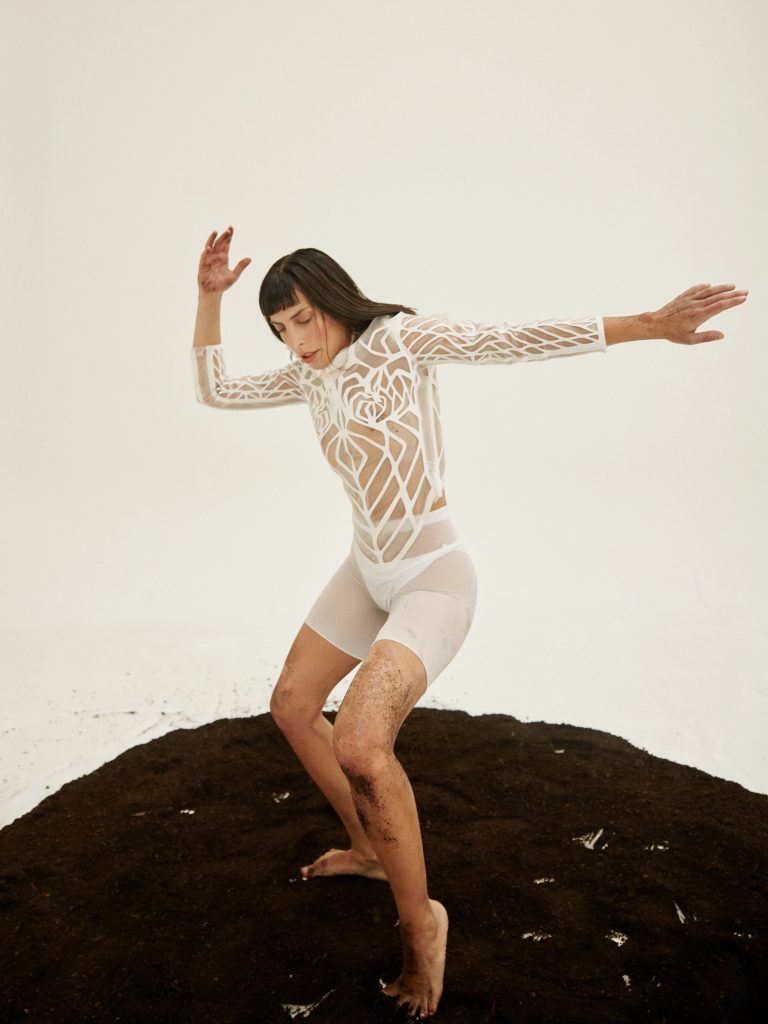
Technology is developing and we are adapting. It grows very fast, but at the same time, we do not see the results until years go by. In this case, I think that NFTs are like the arrival of the Internet, at the beginning, it was a phenomenon that people did not have much idea about and they were adapting little by little.
For example, when the first email was sent. We have all been getting used to it without realizing it, but it has taken time and years. With NFTs, I think the same thing. We will not know where they have taken us for a few years yet.
What do you think about all the frauds and scams that are happening in the NFT market and how is this affecting emerging artists?
In the end, it’s like everything else. Human beings are constantly exposed to the possibility of breaking the rules governed by society. It’s complicated. There are always going to be frauds and scams. It’s like if they give you a knife, you can cut vegetables with it, and at the same time kill someone with it. The act of making something happen is inside each person. We can’t limit ourselves to not creating new things just because of this. Otherwise, it would be impossible.
How do you see the future of NFTs in the short and long term?
I don’t want to be pessimistic but I still think it could end at any time. It’s an emerging market that still has much to learn and changes very quickly. It’s hard for me to see it in the long term, but certainly, artists will have to adapt and at some point, I will merge my art with this one.
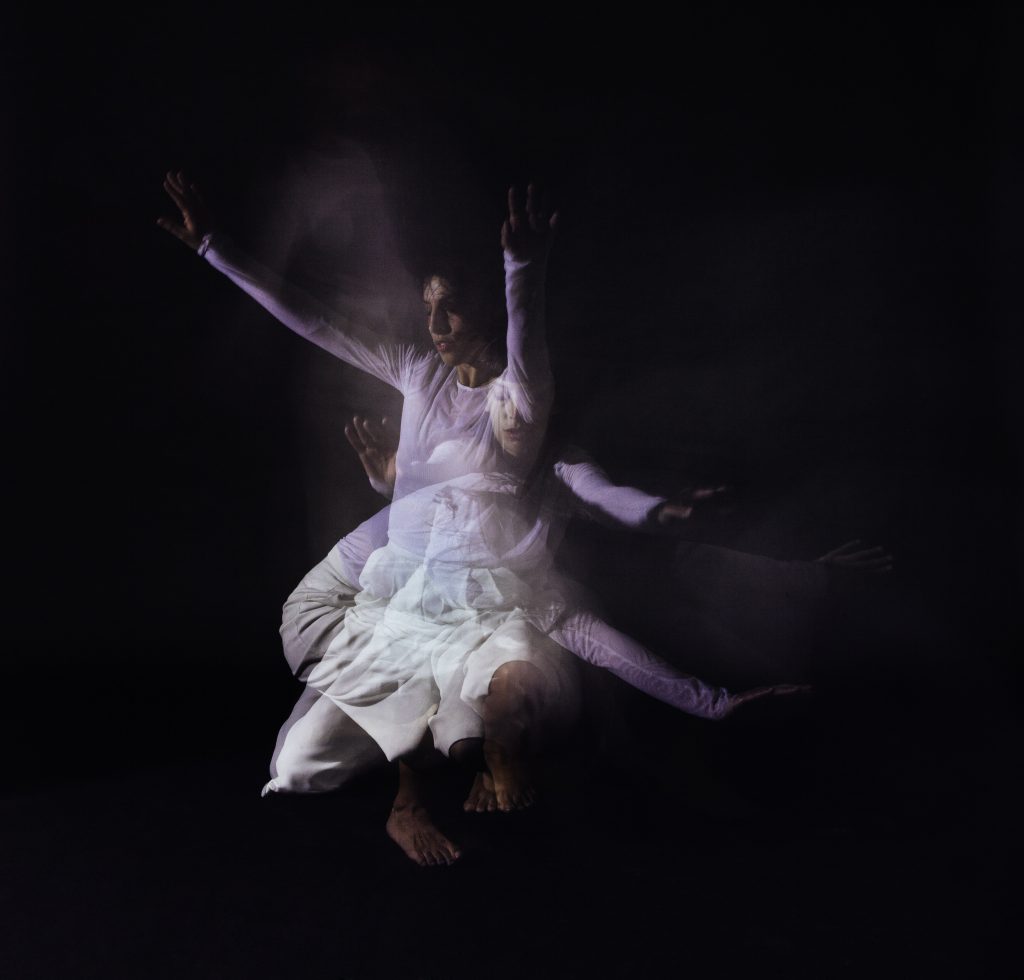
Noland Explores – NFTs Series x Brosmind
Are NFTs a revolution in the digital art world or just another bubble about to burst?
N x NFTS, is a program aimed at those intrigued by digital art, NFTs, and their immense potential.
We interviewed many renowned artists and asked all of them the same question: Are NFTs a revolution in the digital art world or is it just another bubble about to burst?
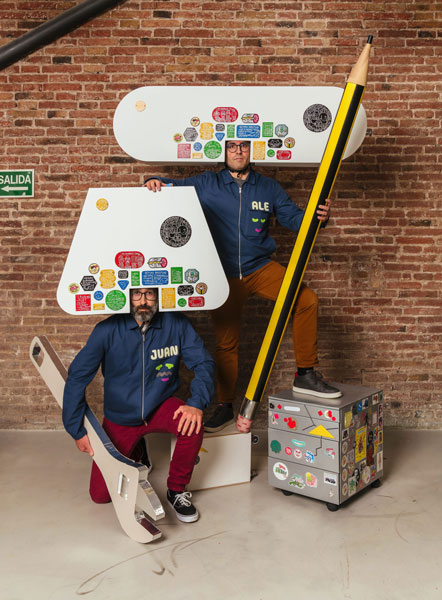
Today’s interview is with Brosmind, a creative power duo and multidisciplinary studio founded in 2007 by Juan and Alejandro Mingarro. Having worked together since childhood, the brothers are known for their playful sense of humour and unflinching attention to detail. Their work has been published, exhibited, and awarded worldwide.
Brosmind just launched their NFTS collection called Shamanzs, an original collection of randomly generated NFTs. Hundreds of traits have been drawn by hand, to create a vast array of high quality and unique loving characters that will explain in today’s interview.
What brought you into this digital art world and what is it that you find attractive and interesting about NFTs?
Alejandro: It all happened at the beginning of the pandemic, due to the business crisis that was generated, agencies were not calling… With NFTs we saw the possibility of generating business and connecting directly with our audience. Some of our fellow illustrators began to enter the NFT world to counteract the business crisis in the advertising and publishing sector. We continued doing commercial illustrations for advertising, and little by little we started experimenting with NFTs. It was in the last year when we started to do it more seriously.
Little by little, we could see how our personal projects, which often end up being simply something to show on the website or in exhibitions, allowed us to create a more personal type of work, more connected with our audience and be able to make a living from it. That caught our attention and we were trying slowly but we never made a hard stop with the commercial work. We were lucky that even in the pandemic we were still working.
Juan: It’s very different from what we had been trying at the beginning, the world of NFTs works like a small gallery where you add your works. The operation is similar to that of traditional art. On the other hand, with this project or with other collections such as Shamanzs, there are many more factors; in addition to the utility that lies behind it for many people, it is a financial asset in which they invest.
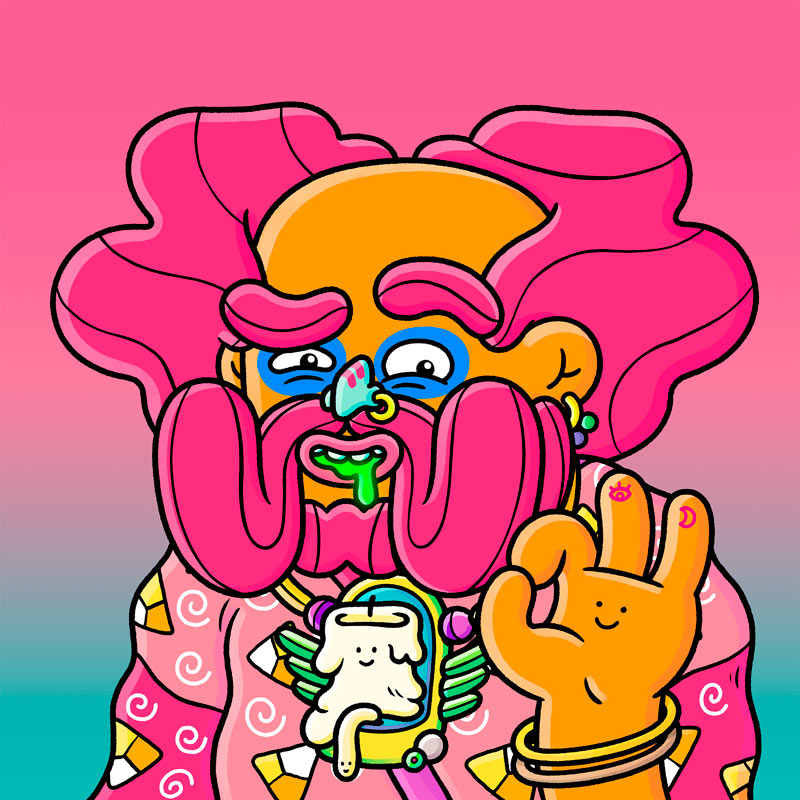
Alejandro: That was one of the concerns we had, always looking at it from an artistic point of view. When you generate an NFT in more exclusive platforms, art is the main thing, but in massive collections such as Shamanzs or self-generative pieces, art can remain as something secondary in many of them. We wanted to develop something where art was primordial. We wanted to create a solid collection on a visual level and with this project, we feel very comfortable.
So is the collection already finished? or do you think that you will be creating and adding new NFTs?
Alejandro: The idea from the beginning is that not only the collection but the project itself is going to be long term. Apart from the surfaces of this first release we have created, the idea is to build a brand behind it, and have it constantly maintained.
Shamanzs is a long term idea. The good thing is that we have a community that has received the project super well, and is going for the good vibes. We have managed to strike a balance in which we feel very comfortable and that allows us to build up little by little.
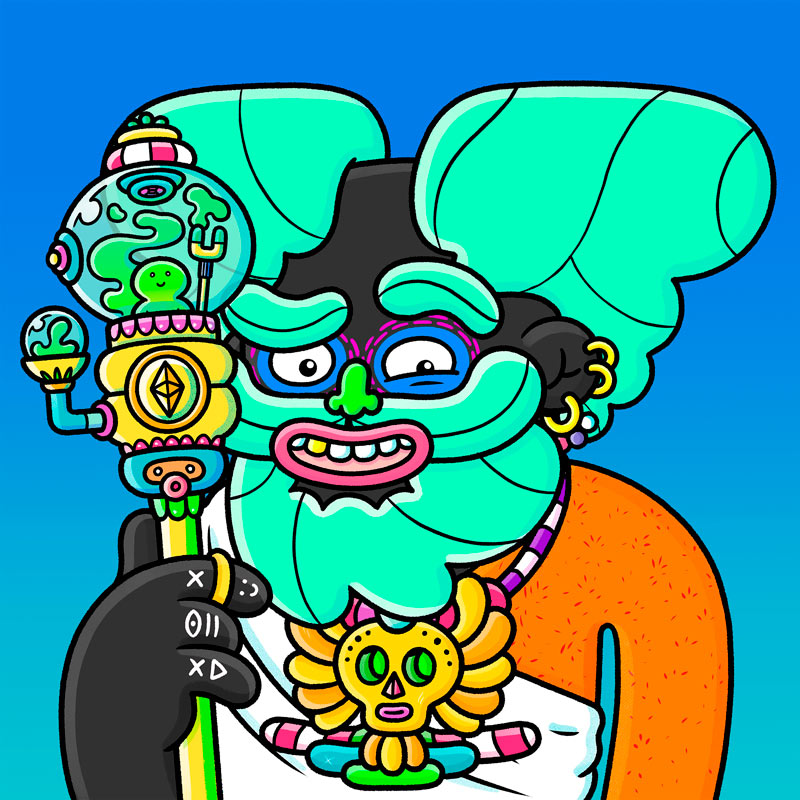
Juan: It really is a community that has become important to itself. There are people who communicate and meet every day. They do courses, share knowledge, and there are chats in several languages, it’s incredible.
In what ways do you see NFTs complementing the art world? Which benefits besides financial do you see in NFTs compared to more classical ways of creating and trading art pieces?
Juan: Here it depends a lot on the technical side. We are no experts, but all that development part allows for things that traditional artwork cannot do. There are pieces that evolve over time, things that we can’t even imagine and the developers or programmers are the ones who are now researching that world.
Alejandro: It is very interesting because they are keys that open up other worlds. This collection is evolved over time, there are things that expire, and characters that evolve. On the one hand, you have the technical section, which is amazing that you can set a date and limits, but also the narrative part that you can add to and have it merge. That’s super interesting.
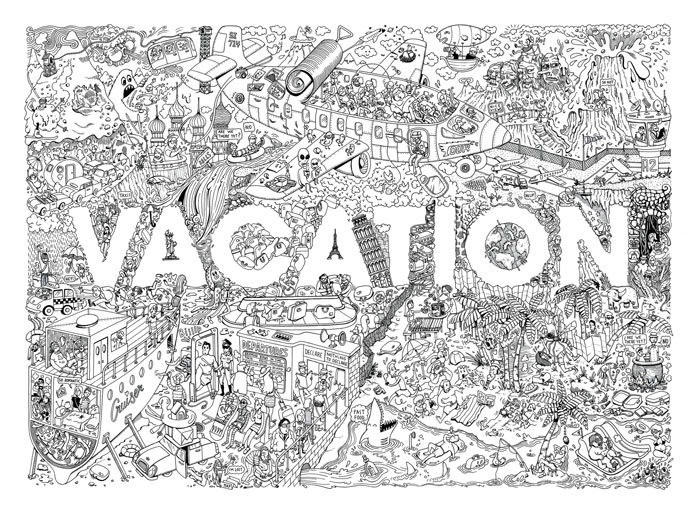
It has its good side but it also has its bad side, which is all the frauds or scams… What is your opinion on that?
Alejandro: Actually, this also existed in the traditional art world.
There is a lot of speculation and a lot of virtual attacks. We have suffered a direct attack on our own collection that we are still studying. On the day of the launch, we saw some strange movements and it was assumed that it was a coordinated attack by someone who wanted it to fail or wanted to boycott the launch. Although there is a trace of everything, there are also systems in place to preserve anonymity, and you can’t see who is behind it.
It’s still something very new, so now everybody is taking full advantage of it and I suppose that little by little it will settle down. We have to see how exactly it should be applied; which are the lines of work. I suppose that with time everything will stabilize.
Juan: It’s a bit like the wild west. It is difficult to control, it is not yet legislated. Many things are being done for the first time. There are different theories…now it is a bit risky.
Alejandro: There are many bad things about it, but the good things are so good that we just have to wait a little bit and see how it all evolves. For us, the ideal future would be that our clients hire us through a smart contract; in which you could follow up on that part. We have to improve the issue of CO2 consumption, but in itself, the technology seems very useful and we are fascinated by it, and not only in the art world.
Many luxury brands are joining, do you think it will be a more exclusive market or is it within everyone’s reach?
Alejandro: I think it will become popular at all levels, in the end, we will all have an NFT – whether it is art or something else. Obviously, there are other companies and they will also join in because it is like a trend. You just have to give it time. The NFTs may have that exclusive and elitist aura, but they are still accessible. For example, on the day of tomorrow, you could go to school and every student has his NFT, which could be a key and access to a world, like a bookstore, for example.
Obviously, there are the big companies that make it more exclusive and elitist because the people who have cryptocurrencies are people who have money, but little by little it will become more popular.
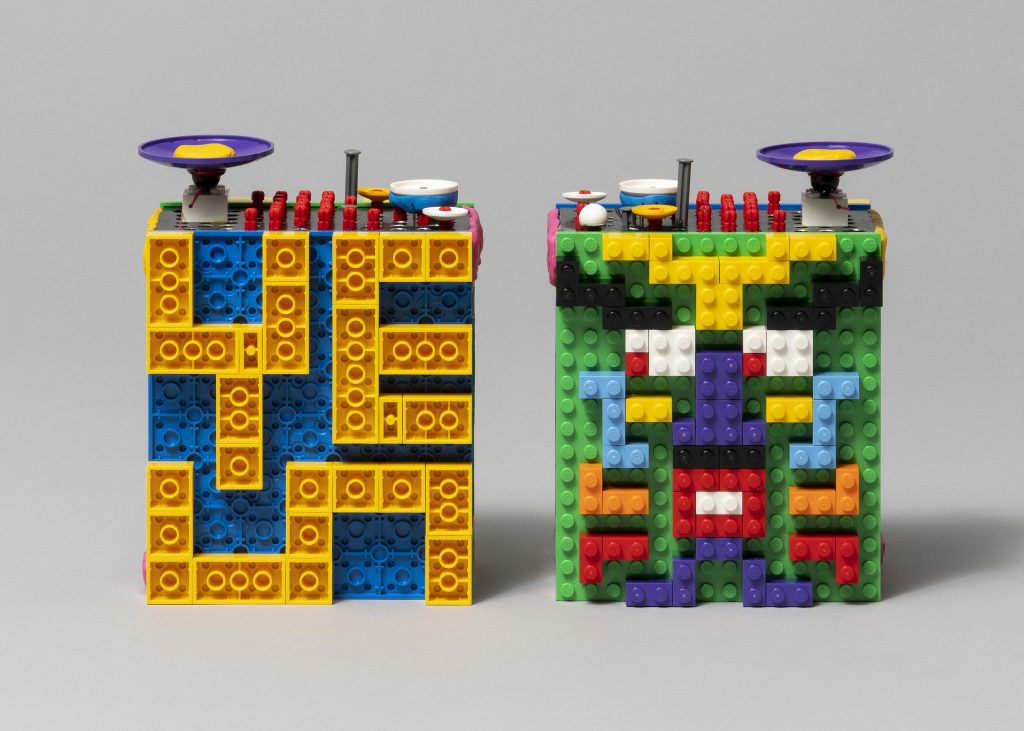
Juan: We can’t blame the bad practice of companies in each sector on NFTs, because this is something that was already been done previously. The big brands also do things, such as selling a product that is supposed to be exclusive for a lot of money, but in reality, it is not worth that much… you are paying for prestige. That’s not the fault of the NFT itself, but of how the world works. Blockchain technology is not to blame for that either.
Alejandro: We have to change the mindset. We come from a generation that values material things, we like to have books, collect movies, things you can touch. However, the new generations are very linked to technology. It is something we have been doing for many years, we just have to change the mentality as we move further and further into the digital realm.
What future do you see in the short and long term?
Alejandro: I think there are still people who are reluctant to understand it, or don’t understand why they pay these amounts for certain pieces. But once you are in, you understand it much better. Little by little it will become more popular. I think it will be applied on a day-to-day basis. There will be things like buying an apartment, getting your ID card, and your passport, everything will be linked to technology. Just as with Netflix. Before we rented or bought movies, now we pay for a subscription. With the passage of time, people will see it as something normal. Little by little, it has to find its place.
Juan: Yes, there are cases that are strange or could be criticized, but there are others where this technology has been used very well. We have to wait, be optimistic, and believe that these good practices will be the majority in the future.
Alejandro: We believe that all the environmental and energy costs have to be corrected. There are already platforms and cryptocurrencies that are dealing with it better, but we are still in the testing phase. It is like when Whatsapp came out, they used to say that if you sent a text with a single emoji it consumed a lot of energy. All technology has problems at the beginning, so it is important to see how it is used and how it can be optimised.
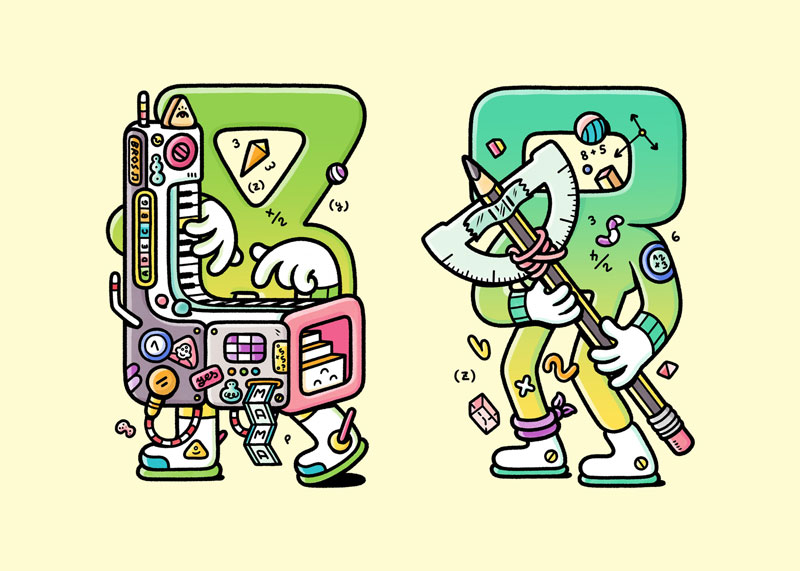
How to boost your creative sense?
Believe it or not, creativity isn’t a light bulb that occasionally lights up unpredictably, it’s more like a muscle, not a skill. We were all creative as children: we invented invisible friends, wrote stories, drew monsters…However, as we grow up we focus our attention on challenges and problems of daily life, and our creativity is somehow affected.
Luckily, there are several techniques that help boost our creativity. Today we celebrate World Creativity Day and we’d like to show you some essential tips from Noland:
1. How limits and constraints can boost your creativity:
In terms of constraints, we can refer to two types: intentional constraints and unintentional constraints. Both can help feed our creativity.
In a BBC Ideas article, Professor Catrinel Tromp, a cognitive psychologist specializing in constraints, commented: “It’s a nice myth to think of creativity as a field of endless possibilities, the reality is that when people are faced with such a wonderful open field they can become paralyzed. Constraints are the anchors of creativity“.
Taking advantage of those everyday constraints or moments and putting them together in a way that doesn’t mean it’s novel, but actually has meaning for society and changes the way people see the world is possible.
Resilience comes when you have problems and challenges and that in turn nurtures new ideas.
Example: Pau Santa Pau, Member and founder of Noland Studio, took advantage of the imposed quarantine during the first wave of COVID by observing his environment and drawing a different area of his house – every day observing from another perspective.
Playing with different constraints can expand your imagination and enhance creativity.
2. How travel increases creativity
When we travel, exploration, discovery and surprise abound. Many studies show that travelling can increase your creativity and, by extension, make you more capable of solving problems and innovating.
If you can’t afford it, explore further out of your environment, look for alternative spaces, change your perspective and you’ll see how stepping out of your routine will sprout new opportunities that themselves may bring out different facets of yourself that may have been dormant due to repetition or habit.
Sometimes all it takes is an inspirational escape.
Example: Designer Stefan Sagmeister, in one of his TED talks, talked about encouraging his workers to take a sabbatical year off every few years to travel in order to reactivate creativity.
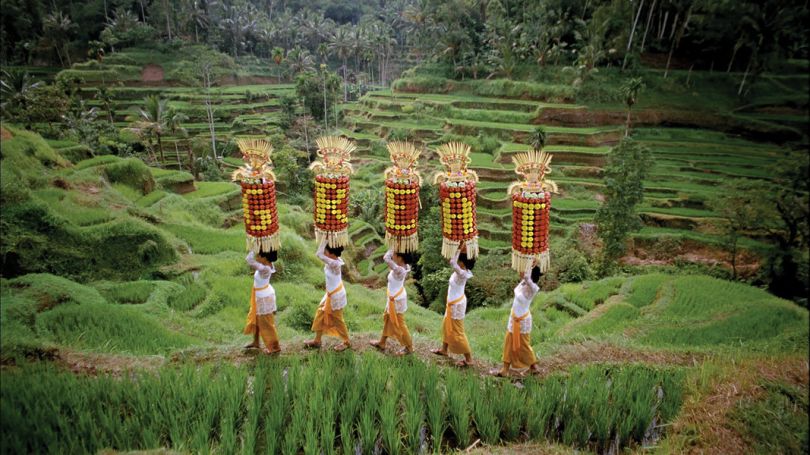
3. Enjoy the process and learn from it.
In design, a large number of processes and methodologies are followed as part of the development in a project. But acute observation within these same processes is essentially how many ideas are generated.
It has been demonstrated that the working rhythm of the human-machine is linear. It has a beginning and an end, and is results-based. In contrast, the rhythm of creative work is cyclical; sensitive, holistic and organic. It has its own rhythm.
Let yourself go, try and trust in the process, and don’t be so worried about the outcome of the final product. Nowadays we are too used to immediacy. Our very nature drives us towards fear and perfectionism.
In being able to enjoy what you do, the process becomes the reward.
Example: Picasso has always been faithful to an iron discipline of work in which he said that inspiration exists, but it has to find you working. In the famous documentary “The Mystery of Picasso” we can see him at work and see how work grows from nothing. What happens during the creative process? Innovation is in the process, not the event.
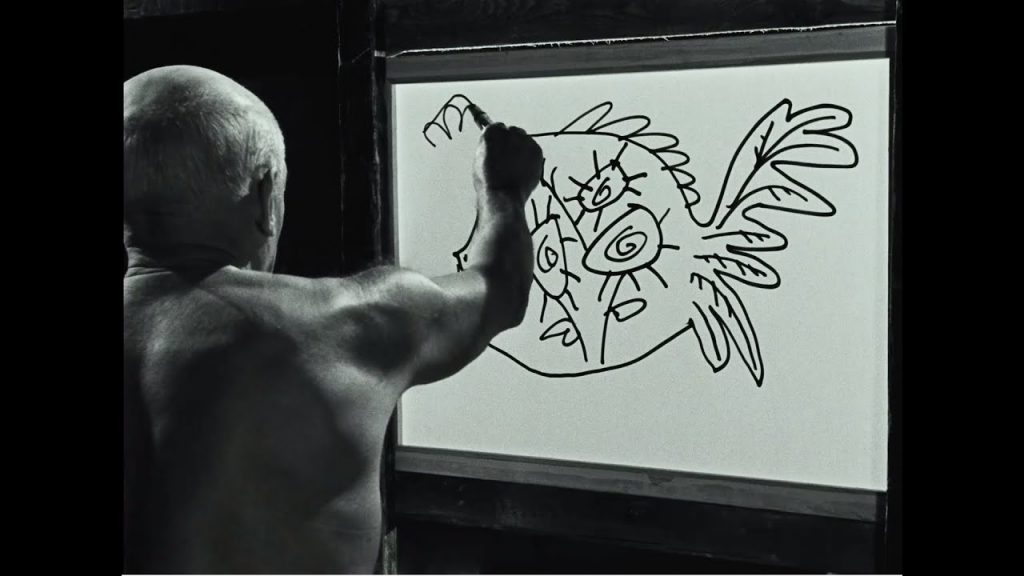
4. Best ideas come during the transition from wakefulness to sleep.
Between wakefulness and sleep, we reach the hypnagogic state, the most creative phase of the brain. These are known as “transition” moments; in which one is about to fall asleep but still retains some contact with the waking world.
It is recommended to write, draw, and write down all ideas that come to mind during this state because they could be useful later in your work. We can create, hear melodies in our own head, and come to conclusions that in a more lucid state we might not reach, imagine, feel, or appreciate.
Example: Edison slept with metal balls that woke him up when they fell from his hand, so he did not fall asleep deeply and was able to remember what he dreamed during that state; to take advantage of the creative opportunities that opened up in that phase.

5. Observe, outwardly and inwardly.
To open our mind and perceive new scenarios, we have to observe carefully to know and understand the world in which we are in. Observing the environment, both our planet and its nature – as well as the artistic and cultural panorama – reveals new perspectives.
But it is not only important to observe our environment, we must also be able to observe our ideas from a certain distance. Observation is important in any production process, and in creative thinking it is important to know how to distance oneself from the idea, let it cool down and detach oneself.
Observation is the seed of every idea.
Example: Artist Mr Kitt Man spices up reality by adding a bit of fiction framed in yellow, with which he combats the grayness of boredom. The post-it notes with scribbles that tried to brighten up his office days jumped into the real world, to look for new possibilities, thus creating “The post-it days” in which he tries to change daily reality with one of the most everyday canvases in the world.
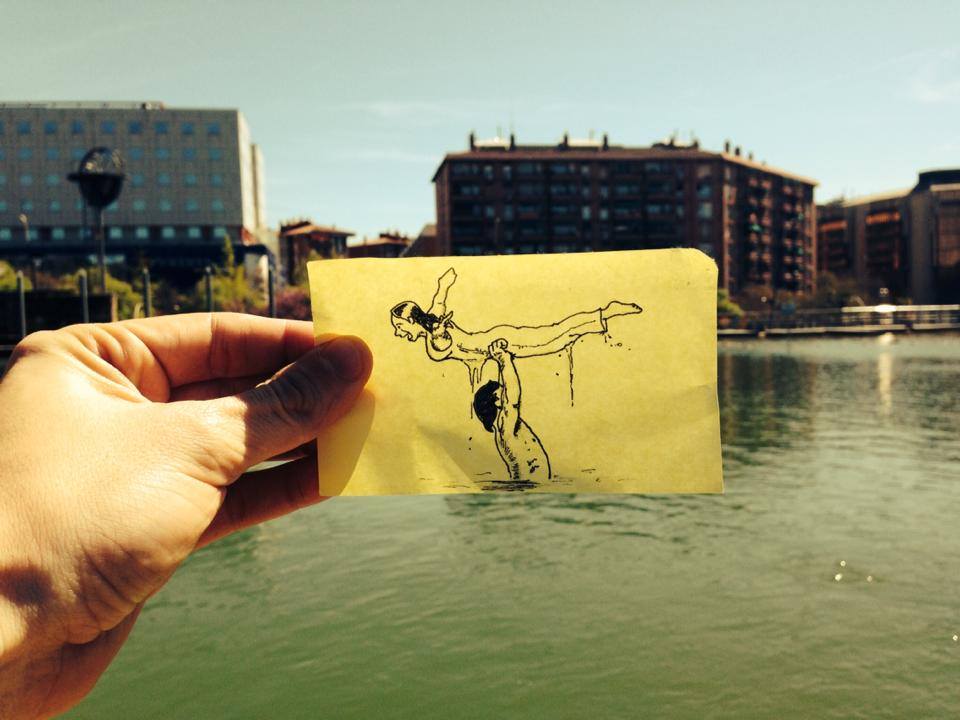
We hope we helped with these tips and you have a lovely, creative and innovation day.
From Noland to all creative minds around.
